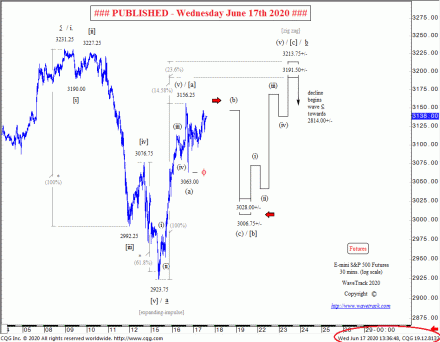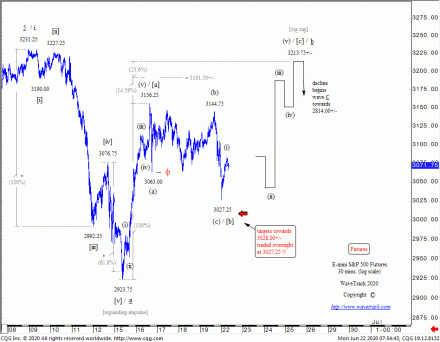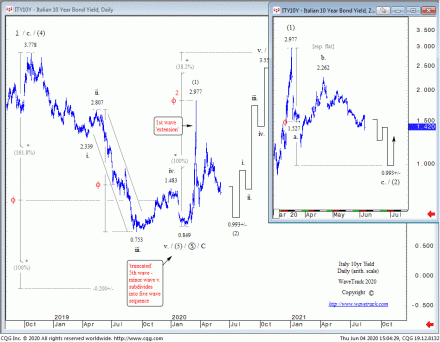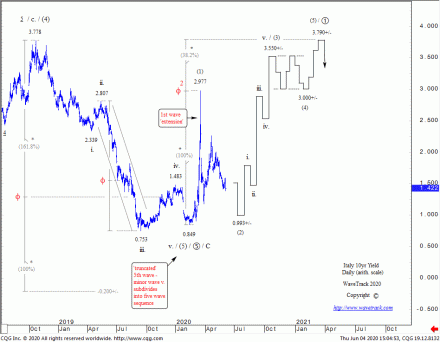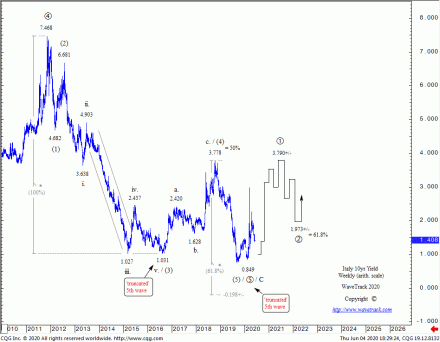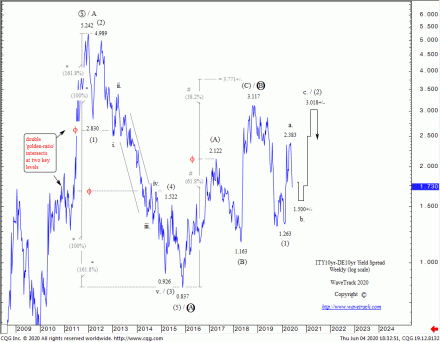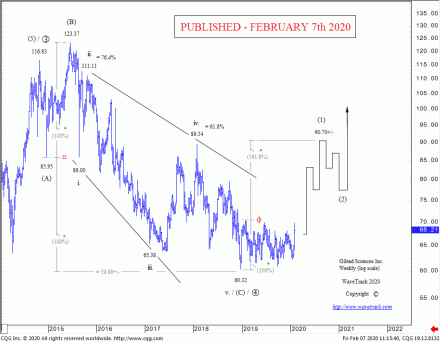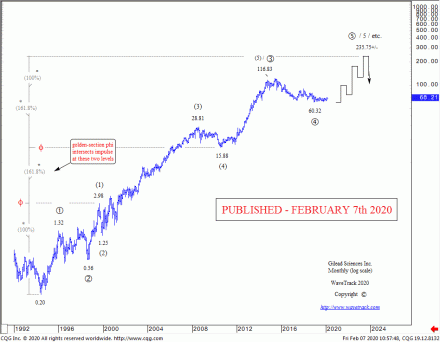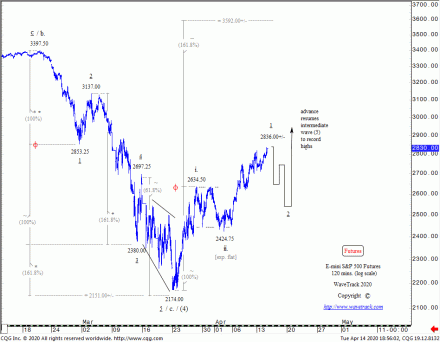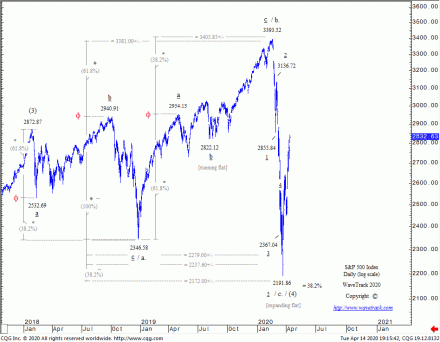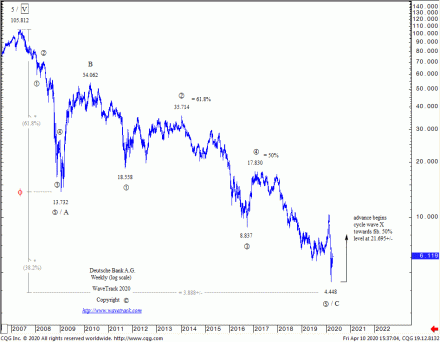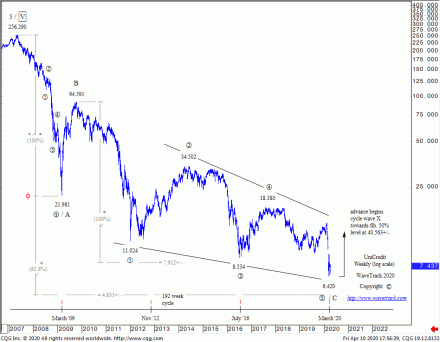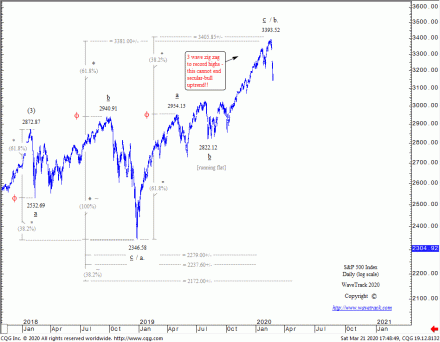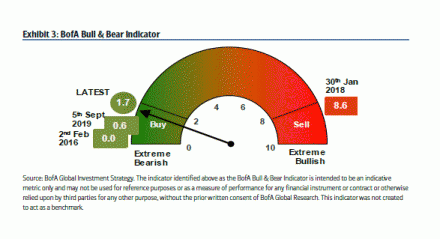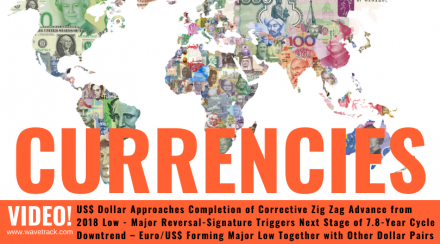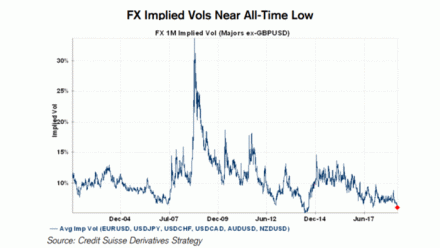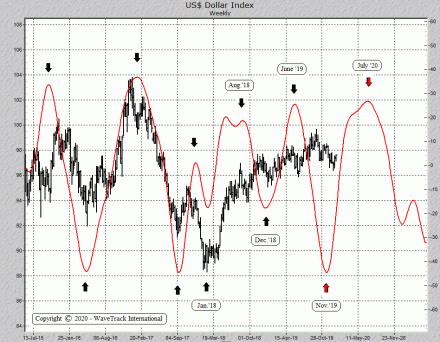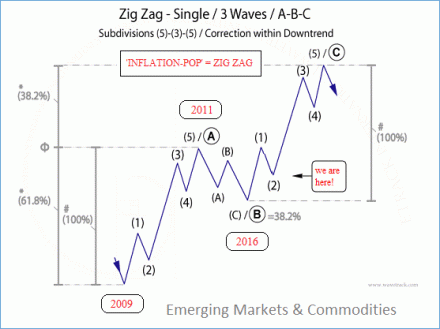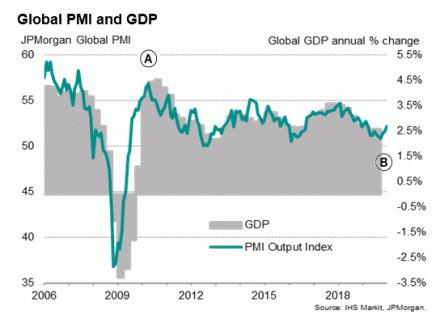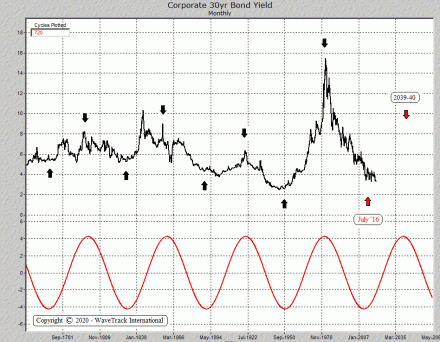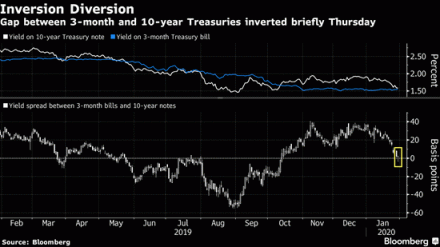SP500 – Counter-Trend in Progress to 3213.75+/-
by WaveTrack International| June 22, 2020 | No Comments
SP500 – Counter-Trend Zig Zag Rally in Progress from 2923.75 to 3213.75+/-
For more details, see last Friday’s Elliott Wave Compass Report
The SP500 began a corrective 2nd wave downswing from the June high of 3231.25 (futures). Labelled as minor wave ii. two, this unfolding into a minute degree a-b-c zig zag pattern, subdividing 5-3-5. It is the correction of minor wave i. one’s five wave impulse advance that began from the March low of 2174.00.
Minute wave a of this corrective zig zag downswing completed already, into the mid-June low of 2923.75. Note its five wave structure, labelled [i]-[ii]-[iii-]-[iv]-[v]. This is being followed by a counter-trend zig zag rally as minute wave b. However, this minute wave b is still incomplete. Labelled [a]-[b]-[c], this must subdivide into a 5-3-5 sequence. Note, wave [a] satisfactorily unfolded into a five wave upswing ending at 3156.25. Although this time last week, wave [b] remained incomplete to the downside where targets were towards 3028.00+/-, max. 3006.75+/-. See fig #1.
But overnight selling has now pulled the SP500 down to the 3028.00+/- target level, trading at 3027.25 in completing wave [b] – see fig #2. The immediate response higher is a good indication of its intention to now push higher as wave [c] targeting 3213.75+/- over the next several trading days.
Once this [a]-[b]-[c] zig zag rally has ended minute wave b, then wave c declines can resume the larger zig zag downswing as minor wave ii. two.
The Elliott Wave Compass Report
Get WaveTrack’s latest SP500 forecasts by subscribing to the Elliott Wave Compass report.
The ELLIOTT WAVE COMPASS report focuses on the shorter-term perspective of price development. Firstly, the report is comprised of two online updates per week. Secondly, it is describing and illustrating a cross-section of market trends/counter-trends for stock indices, bonds, currencies, and commodities from around the world. And above all, this report is ideal for professional and private clients trading a time horizon of just a few days to a few weeks ahead.
The bi-weekly EW-Compass report offers a short-term perspective for global markets
· Stock Indices
· Bonds
· Currencies (FX)
· Commodities
If you like to know more details about the Elliott Wave Compass report click here, please click here
Italian ITY10yr Yield
by WaveTrack International| June 5, 2020 | No Comments
The Italian ITY10yr yield has just broken below key support levels traded last week at 1.417% as the ECB commit to more funding – existing downside targets towards 0.993% remain on-track
ECB and Yields
The European Central Bank met earlier this afternoon, deciding on an extension of the Pandemic Purchase Programme (PPP) to at least June 2021. The ECB will buy bonds up to €20bn month plus €120bn this year in a total programme rising from €600bn to €1.35 trillion Euros. The central bank leaves the main refinancing rate unchanged at 0.00% per cent.
The news of more funding into the financial system was a commitment that sends the ITY10yr yield tumbling lower from 1.592% just before the announcement to 1.373% before closing the session at 1.408%. The break below last week’s support at 1.417% is confirming original downside targets towards 0.993% remain on-track – see fig #1.
Once completed at 0.993, this decline ends a zig zag pattern for intermediate wave (2) from 2.977 opening the way for a continuation of the larger five wave impulse uptrend as wave (3) towards 3.550+/- and ultimately wave (5) to 3.790+/- sometime next year – see fig #2 & fig #3.
The long-term picture remains unchanged. Cycle wave A’s five wave impulse uptrend is forecast towards 8.820+/- during the next several years – see fig #4.
Italian and German 10yr Yield
The ITY10yr-DE10yr yield spread is clearly narrowing over the medium term over the next several years. However, the intermediate-term picture suggests some narrowing in the short-term. With shorter-term targets towards 1.500+/- as minor wave b. within an a-b-c widening counter-trend upswing of wave (2) that began from the Feb.’20 low of 1.263 (weekly closing chart) – see fig #5. Minor wave c. upside targets over the coming year are towards 3.018+/-.
Conclusion
The ECB is obviously ready to go to any lengths to support the Eurozone economy. For the time being, that is triggering lower Italian yields. However, slightly higher DE10yr bund yields as the burden of payment lies with Germany.
XOP Oil and Gas Index/ETF – Advance
by WaveTrack International| May 12, 2020 | 2 Comments
Mid-March $29.48 Low Begins 2½ Year Advance to 1180.00+/-
Read more «XOP Oil and Gas Index/ETF – Advance»
SP500 – Heading Lower
by WaveTrack International| April 28, 2020 | No Comments
SP500 – Expanding Flat – Heading Lower Towards 2655.75+/-
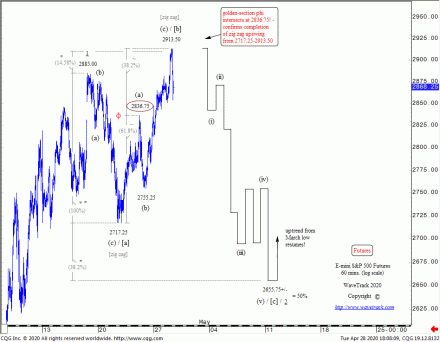
SP500 E-mini Futures – 60 mins. – Elliott Wave Forecast by www.wavetrack.com – WaveTrack International
The SP500 has just completed a three wave zig zag rally from last week’s low of 2717.25 into today’s high of 2913.50. This pattern is labelled in sub-minuette degree, (a)-(b)-(c). Note how extending wave (a) by a fib. 61.8% ratio projects the terminal high for wave (c) smack into the actual high of 2913.50, validating its completion.
The 2913.50 high ends a larger degree [b] wave advance within a declining [a]-[b]-[c] expanding flat pattern. By extending wave [a]’s initial decline to 2717.25 by a fib. 14.58% ratio projects a terminal high towards 2910.25, just a slither away from the high.
Wave [a] can also be extended to the downside by fib-price-ratios in determining the terminal low for wave [c]’s five wave impulse downswing. We’ve selected a fib. 38.2% ratio because this converges with the fib. 50% retracement level of the preceding impulse advance of minute wave 1 that began from the April 2nd low of 2424.75 (log scale). This projects wave [c] towards 2655.75+/-.
Conclusion
Identifying this expanding flat pattern verifies the larger advance from the March 23rd low of 2174.00 is a bullish 1-2-1 sequence with another 2nd wave correction underway towards 2655.75+/-.
This disproves the theory that March’s advance is a corrective zig zag within a secular-bear downtrend. Rather, it proofs the bullish outlook of the secular-bull uptrend of intermediate wave (5).
If you’d like to see more charts like this, please subscribe to our latest video update – more information here:
SPECIAL VIDEO – Aftermath of the Coronavirus Sell-off – Inflation-Pop Diluted but Still On-Track
Get WaveTrack’s latest SP500 forecasts by subscribing to the Elliott Wave Compass report.
The ELLIOTT WAVE COMPASS report focuses on the shorter-term perspective of price development. Firstly, the report is comprised of two online updates per week. Secondly, it is describing and illustrating a cross-section of market trends/counter-trends for stock indices, bonds, currencies, and commodities from around the world. And above all, this report is ideal for professional and private clients trading a time horizon of just a few days to a few weeks ahead.
The bi-weekly EW-Compass report offers a short-term perspective for global markets
· Stock Indices
· Bonds
· Currencies (FX)
· Commodities
If you like to know more details about the Elliott Wave Compass report click here, please click here
Gilead Sciences – Stock Pops +16% Overnight!
by WaveTrack International| April 17, 2020 | 2 Comments
Gilead Science’s stock pops +16% per cent in the pre-market following its announcement that its coronavirus drug trial shows encouraging early results. However, in the past it has been shown that vaccines need longer testing to be deemed safe.
Gilead Sciences has been on our stock-watch list since the beginning of the coronavirus pandemic began to spread outside of China in early February. Overnight news that it’s made progress in clinical testing of a new drug that combats the symptoms of the coronavirus has sent its stock price up +16% per cent in the pre-market.
Trading overnight has been as high as 89.38. Although it’s drifted lower in the last hour from that high to 84.20. But could this leap higher have been predicted? Any number of companies engaged in the rush to find a cure for coronavirus could be watched. However, this stock did get our interest early on because of its pattern development.
Back in December ‘18, Gilead Sciences had completed a multi-year corrective downswing that began from the Oct.’14 high of 116.83 at 60.32 – see fig #1. This correction unfolded into a typical Elliott Wave expanding flat pattern as primary wave 4 whilst labelled in intermediate degree, (A)-(B)-(C).
Gilead and Fibonacci Ratio Analysis
Wave (A) ended an initial three wave zig zag downswing to 85.95 which was followed by another zig zag upswing to 123.37. Wave (C)’s decline would normally extend below wave (A) by a fib. 38.2% ratio (or sometimes 23.6%. 14.58%). But in this case, it extended by a fib. 100% ratio. This rather uncommon fib-price-ratio measurement was required in order to fully balance the preceding uptrend of primary wave 3’s advance so that wave 4’s percentage correction was at least similar to wave 2’s decline.
Nevertheless, extending wave (A) by a fib. 100% ratio projected a terminal low for wave (C) to 59.88+/-. The actual low was in close proximity, at 60.32.
It then spent another year doing absolutely nothing until prices shot higher towards the end of February this year and now overnight to 89.38. As you can see from the chart, upside targets to complete wave (1) were towards 90.70+/-. And in answer to the original question, could this pop higher have been predicted, the answer is clearly yes.
What Next?
The long-term uptrend of Gilead Sciences shows an incomplete five wave impulse uptrend in development from the June ’94 low of 0.20 – see fig #2.
The December ’18 low ended primary wave 4 with a percentage decline of -48.3% per cent. Very similar to primary wave 2’s decline of -57.5% per cent.
Primary wave 5 now seems well established to the upside, notwithstanding a potential wave (2) correction at some stage soon. Other than that, primary wave 5 upside targets remain unchanged towards 235.75+/-. This measurement is derived by extending the initial 1-2-1 sequence from 0.20 to 2.98 by a fib. 161.8% ratio.
Subscribe!
Institutions –
Private Investors –
SP500 – Crisis! What Crisis!
by WaveTrack International| April 15, 2020 | No Comments
The SP500 advance is only three waves up from the March 23rd low – so does this qualify as a corrective a-b-c zig zag within a secular-bear downtrend, or a bullish 1-2-1 sequence within the continuation of the secular-bull uptrend?
The Big Question
Given the amount of correspondence received recently, we’d like to address the one big question that rests upon everyone’s lips. Has February/March’s coronavirus sell-off begun a secular-bear downtrend? Or has the March 23rd low ended a counter-trend correction within the continuation of a secular-bull uptrend?
Our Elliott Wave analysis suggests the March 23rd low ended a correction within the continuation of the secular-bull uptrend. But let’s see if this can really be objectively substantiated.
Mainstream Elliott Wave analysts are saying we’re entering the beginning of a secular-bear downtrend. However, this seems fanciful and not substantiated basis introspective analysis across varying stock indices. Why not take a look at equities or other asset classes?
SP500 – Up or Down?
This first chart of the SP500 depicts a five wave impulse downswing from February’s high of 3397.50 ending into the March 23rd low of 2174.00 – see fig #1. This actual low of 2174.00 was forecast on the very day it occurred (see WaveTrack social media updates, twitter and FaceBook dt. March 23rd). See here:
#SP500 – End of Coronavirus Sell-Off – #ElliottWave – https://t.co/GF8fEbEiAq pic.twitter.com/NcBccuHhdU
— Elliott WaveTrack (@ElliottWave_WTI) March 23, 2020
This decline has excited the bears! Mainly, because the next rally has unfolded into a three wave sequence to current levels of 2836.00+/-. But is this an a-b-c corrective zig zag? Or as we suggest, a bullish 1-2-1 sequence?
SP500 and The Larger Picture
Viewed in isolation, both can be equally true! But to answer this truthfully, we must first take a look at how these two sequences, the five wave decline and the three wave rally fit into the larger picture.
What must be considered is the way the SP500’s advance from the Dec.’18 low of 2346.58 (cash) unfolded into the Feb.’20 high of 3393.52 – see fig #2. In this chart, we can ‘proof’ that it unfolded into an a-b-c zig zag pattern – from a qualitative perspective, both waves a and c subdivide into a necessary five wave impulse sequence – from a quantitative perspective, this advance fits perfectly into the criteria of unfolding into a zig zag, where wave a is extended by a fib. 61.8% ratio in projecting the terminal high for wave c at 3405.85+/- (small deviation).
We already know that secular-bull uptrends don’t finish major highs as zig zags but as five wave impulse patterns. The only time a zig zag can end a secular-bull uptrend in this way is if it were the 5th wave within an ending-diagonal, but this is clearly not the case here.
This a-b-c zig zag is in fact, the second sequence, i.e. minor wave b. within a larger a-b-c 3-3-5 expanding flat pattern that began unfolding lower as intermediate wave (4) from the Jan.’18 high of 2872.87 – see fig #3. This explains why February/March’s sell-off to 2196.86 unfolded into a five wave impulse pattern, ending at 21941.86 (cash), 2174.00+/- (futures).
Putting these aspects together, the outlook turns bullish over the next couple of years, not bearish.
But what about the three wave upswing from the March 23rd low? Well, this must be a bullish 1-2-1 sequence – another 2nd wave correction is due, but that should, must end above the secondary low of 2424.75 (futures).
Corroboration – Deutsche Bank – UniCredit Bank
There are many other global indices that support this bullish development – Europe’s Eurostoxx 50 and Xetra Dax, the U.K.’s FTSE-100 are all showing major corrective downswings ended last month. But we’ve also taken a look at the underperforming European Banking Sector to get some idea of which direction the larger trends are developing.
Deutsche Bank
First up is Deutsche Bank. This equity has been underperforming for so long, it’s guaranteed that it will look super-bearish if the SP500 were beginning a secular-bear downtrend. But it’s not! See fig #4. Deutsche Bank is just finishing a major A-B-C zig zag downswing from its all-time high of 105.812 into the March ’20 low of 4.448. We can ‘proof’ this where cycle waves A and C both subdivide into a five wave impulse sequence whilst wave C approaches a terminal low at the fib. 61.8% extension below cycle wave A. Now that’s really bullish. A multi-year rally can begin now. You wouldn’t see that if the SP500 were about to collapse lower!
UniCredit
Second, up is UniCredit Bank. It has also declined into a huge A-B-C zig zag corrective pattern from its all-time high of 256.290 ending into the March ’20 low of 6.420! See fig #5. Even more interesting is how cycle wave C’s decline has unfolded, into a five wave ending/contracting-diagonal pattern. Unlike expanding-impulse patterns, the completion of an ending-diagonal pattern has certain finite limits. It can’t ‘extend’ like an expanding-impulse, instead is confined to its narrowing boundary lines. In all probability, it has already ended its concluding 5th wave at 6.420. Now that’s very bullish going forward, and like Deutsche Bank, has the opportunity to begin a multi-year recovery advance – that wouldn’t be the case if the SP500 were about to collapse lower.
Conclusion
There’s no doubt that global economies have been hard hit due to the coronavirus pandemic. Will they recover? Yes, we think they will. It may take longer for Main-Street to pick itself off the ground than Wall-Street. But the omens look good – Crisis! What Crisis!? [Supertramp – circa. 1975].
If you’d like to see more charts like this, please subscribe to our latest video update – more information here:
SPECIAL VIDEO – Aftermath of the Coronavirus Sell-off – Inflation-Pop Diluted but Still On-Track
Get WaveTrack’s latest SP500 forecasts by subscribing to the Elliott Wave Compass report.
The ELLIOTT WAVE COMPASS report focuses on the shorter-term perspective of price development. Firstly, the report is comprised of two online updates per week. Secondly, it is describing and illustrating a cross-section of market trends/counter-trends for stock indices, bonds, currencies, and commodities from around the world. And above all, this report is ideal for professional and private clients trading a time horizon of just a few days to a few weeks ahead.
The bi-weekly EW-Compass report offers a short-term perspective for global markets
· Stock Indices
· Bonds
· Currencies (FX)
· Commodities
If you like to know more details about the Elliott Wave Compass report click here, please click here
Aftermath of the Coronavirus Sell-off Video Update
by WaveTrack International| March 27, 2020 | No Comments
Aftermath of the Coronavirus Sell-off – Inflation-Pop Diluted but Still On-Track
The coronavirus sell-off in global stock indices has been described by Goldman Sachs as a ‘Black Swan’, a term for an improbable or unforeseen event. Economist Burton Malkiel who authored the 1973 book ‘A Random Walk Down Wall Street’ said he could not spot a recession on the horizon – he also qualified his remarks by saying that predicting a recession is a very difficult task. So was the coronavirus sell-off really an unpredictable, exogenous event or could the downturn have been foreseen?
Coronavirus – Could it have been predicted?
From an Elliott Wave perspective, yes, the downturn and even its amplitude could have been predicted. Our own analysis was blinded by the fact that various positive-correlation studies indicated a limited risk to a sell-off because of the extent of gains in technology stocks combined with a maturing counter-trend downswing in key commodities like Copper from 2018 highs. But there was evidence that heightened the downside risk which means it was certainly plausible to predict the downturn (see ‘Update Alert!’ e-mail dt. February 25th – ‘Increasing Risk of -20% Decline’). Almost all U.S. and European indices completed A-B-C zig zag advances from their Dec.’18 lows into the mid-February highs – and that was the clue to the coronavirus sell-off. See fig #1.
This report updates the S&P 500 and Nasdaq 100 indices which are used as benchmarks for pretty much everything else. The DJ Transportation Average and KBW Banking indices are also updated, giving relevance to the ongoing secular-bull uptrend.
We also update benchmark commodities that are all-so-important in triggering this next but final phase of inflationary pressures – Copper remains on track, heading for record highs as are many other Base Metals – but the coronavirus sell-off in Silver, Platinum and Crude Oil has diluted their participation – but they’ll still have massive gains over the next few years, they just won’t trade to record highs anymore.
Dilution of Inflation-Pop
One of the big ‘take-home’ effects from the coronavirus sell-off is its impact on commodities like Precious Metals and Crude oil. With Silver breaking below its Dec.’15 low of 13.64, that really negates any notion that prices could launch into new record highs during this next but last stage of the ‘Inflation-Pop’ – it’s a similar condition for Platinum too. They will still push dramatically higher over the next few years, but they won’t break to new record highs. Crude oil is similar. Its recent break below the Feb.’16 low of 26.05 to 20.52 has just about negated any chance of it trading to new record highs during the next few years – but it can still test levels towards 99.25+/-.
What this means is the coronavirus sell-off has in some cases, diluted the up-coming advances for several key commodities during this next but last stage of the ‘Inflation-Pop.
That’s not the case for many of the mining stocks though – gold and base metal miners are still forecast to new record highs.
Currencies & Interest Rates
This report also updates the US$ dollar index and several other major currency pairs. In the annual PART III Currencies & Interest Rate report, over 90 charts of different currency pairs/crosses were updated. Many of those forecasts remain unchanged, especially those US$ Dollar/Asian currency pairs which already depicted dollar strength.
There are only modest changes to the US$ dollar index and Euro/US$, more for Stlg/US$ and US$/Yen but this report updates others which have seen severe weakness against the US$ dollar including the Aussie Dollar, Canadian Dollar, Norwegian Krona and Brazilian Real.
Long-dated government bond yields collapsed at the beginning of March. Even though Elliott Wave analysis depicted declines through most of 2019 and into the first quarter of 2020, we didn’t expect the US10yr yield to collapse down to 0.378% per cent! But ‘Update-Alerts’ quickly identified that low as the end of its long-term downtrend, and since, yields have sprung higher to 1.269%. This report examines the trends across varying maturities alongside the latest forecasts for the European DE10yr yield, Italian ITY10yr yield and related spreads.
S&P 500 – End of the Coronavirus Sell-Off
On Friday 20th March, the EW-Compass report commented –
‘The S&P’s rally from last Wednesday’s low of 2262.00 has so far unfolded higher into only a three wave sequence to Friday’s high of 2497.25… could stretch lower towards 2151.00+/- early Monday/Tuesday this coming week…It now seems inevitable that Monday’s opening will test lower levels before reversal-signatures get triggered. European indices alongside several Asian indices were already completing idealised targets last Thursday – which means the U.S. indices require one additional pull lower before re-synchronising’.
Sure enough, come Monday 23rd March, the S&P 500 put in a major low at 2174.00 which has since triggered a major ‘reversal-signature’. The S&P’s gain since has rallied by +21% per cent, setting some new records.
The outlook now turns very bullish despite many analysts crowding around the idea that the secular-bull uptrend has ended with the beginning of an Armageddon collapse on its way – THINK AGAIN! – the evidence suggests otherwise!
One contributing aspect that supports the idea the coronavirus panic has abated comes from the latest Bank of America/Merrill Lynch sentiment Bull & Bear Indicator – see fig #2. It shows extreme measures of bearishness at a reading of 1.7 – by comparison, the Feb. 2nd 2016 low in major indices produced a reading of 0.0 which as we know, produced a sustainable uptrend afterwards. We all know the risks of interpreting this type of data too literally, but accompanied by Elliott Wave analysis, it offers an insight to what’s ahead.
Update of 2020 Elliott Wave Forecasts
In this latest video/report, we amassed 54 charts updating the major changes from our 2020 annual trilogy series across each asset class, Stock Indices, Commodities, Currencies & Interest Rates together with key Equities from the Mining Sector. These corroborate the next but final stage of the ‘Inflation-Pop’ asset price surge!
We invite you to take this next step in our financial journey with us – video subscription details are below – just follow the links and we’ll see you soon!
Most sincerely,
Peter Goodburn
Founder and Chief Elliott Wave Analyst
WaveTrack International
How to Subscribe:
Contents: 54 charts Time: 1 h 27 mins.
SP500
Nasdaq 100
DJ Transportation Average
KBW Banking Index
EuroStoxx 50
Xetra Dax
Ftse 100
Hang Seng
MSCI Emerging Markets
Nikkei 225
BHP Billiton
Antofagasta
Freeport McMoran
Rio Tinto
Vale
Copper
Zinc
Gold
Silver
Platinum
Newmont Mining
Amer Barrick
Anglo Gold Ashanti
Crude Oil
USD Dollar Index
EUR/USD
STLG/USD
USD/YEN
AUD/USD
USD/CAD
USD/NOK
USD/BRL
US 10yr Yield
USD 5yr Yield
USD 2yr Yield
Germany 10yr Yield
Italy 10yr Yield
HOW CAN YOU RECEIVE THE VIDEO FORECAST?
To receive your VIDEO UPDATE please click here to contact us.
– Please state if you wish to purchase the Aftermath of the Coronavirus Sell-off Video Update March 2020 for USD *48.00 and send us an email to services@wavetrack.com?
– Next we will send you a PayPal payment request and provide you with the video link & PDF report once payment is confirmed. Please know the reply can take up to 6 hours due to time zone differences. But rest assured we will give our best to provide you with the information as soon as possible!
*(additional VAT may be added depending on your country of residence. Currently, the US, Canada, Asia have no added VAT but most European countries do)
We’re sure you’ll reap the benefits – don’t forget to contact us with any Elliott Wave questions – Peter is always keen to hear your views, queries, and comments.
Visit us @ www.wavetrack.com
SP500 – End of Coronavirus Sell-Off
by WaveTrack International| March 23, 2020 | 4 Comments
SP500 – End of Coronavirus Sell-Off
Last week’s downside targets of 2151.00+/- (futures) has been approached in overnight Asian/European trading to a low of 2174.00. This is in the price proximity for ending the entire five wave impulse downswing as minor wave c. from February’s high.
Meanwhile, an overnight sell-off in Japan’s Nikkei 225 traded to lower-lows. However, testing corresponding downside targets of 15722+/- to 15600 before staging a resounding bullish reversal-signature trading up to 18220.
In Europe, the benchmark Eurostoxx 50 and Xetra Dax indices have opened with a gap lower in the cash markets but have held above last week’s lows, triggering a bullish divergence with U.S. indices.
The US$ dollar index is testing overhead resistance around the 102.79+/- area. If all goes according to plan, last week’s high at 102.99 ended the entirety of the a-b-c zig zag correction that began from the Feb.’18 low of 88.26. A resumption of its 7.8-year cycle downtrend is about to begin.
Conclusion
The completion of multi-year expanding flat patterns across several global stock indices, including the benchmark SP500 is confirming the end of the coronavirus sell-off. A resumption of the secular-bull uptrend is about to get underway.
It will, of course, take longer for global economies to catch-up with gains in financial markets! However, the fact that major indices are already signaling a turn-around must be heralded as good news amidst the continuing efforts to stem the spreading of the coronavirus.
WaveTrack’s Elliott Wave Compass report
Get WaveTrack’s latest SP500 forecasts by subscribing to the Elliott Wave Compass report.
The ELLIOTT WAVE COMPASS report focuses on the shorter-term perspective of price development. Firstly, the report is comprised of two online updates per week. Secondly, it is describing and illustrating a cross-section of market trends/counter-trends for stock indices, bonds, currencies, and commodities from around the world. And above all, this report is ideal for professional and private clients trading a time horizon of just a few days to a few weeks ahead.
The bi-weekly EW-Compass report offers a short-term perspective for global markets
· Stock Indices
· Bonds
· Currencies (FX)
· Commodities
If you like to know more details about the Elliott Wave Compass report click here, please click here
Currencies and Interest Rates 2020 Video | PART III/III
by WaveTrack International| February 18, 2020 | 1 Comment
PART III – CURRENCIES & INTEREST RATES
US$ Dollar Approaches Completion of Corrective Zig Zag Advance from 2018 Low – Major Reversal-Signature Triggers Next Stage of 7.8-Year Cycle Downtrend – Euro/US$ Forming Major Low Together with Other Dollar Pairs – U.S. Interest Rates Finalising Declines from 2018 Highs but Lower-Lows Come First – European Interest Rates Set to Retest September ’19 Lows – Italian Yields Break to Historical Lows
INCLUDES ANALYSIS ON MAJOR US$ DOLLAR PAIRS/CROSSES – ASIAN/EM CURRENCIES – MEDIUM-TERM CYCLES – LONG-DATED YIELDS US/EUROPE/JAPAN + SPREADS
We’re pleased to announce the publication of WaveTrack’s annual 2020 trilogy video series of medium-term ELLIOTT WAVE price-forecasts.
Today’s release is PART III, CURRENCIES & INTEREST RATES – Parts I & II were released during the last month.
CURRENCIES REVIEW – 2019
In last June ’19’s mid-year EW-Forecast Video, several key CURRENCY & INTEREST RATE events were highlighted –
• The US$ dollar index is set to accelerate higher through the remainder of this year (2019)
• Corresponding declines forecast for G8 currencies
• Asian currencies are expected to stage overall declines during H2 2019 with the Asian Dollar Index (ADXY) is vulnerable to a decline of -4.5%
• All emerging market and commodity-related currencies are forecast weakening against the US$ dollar during H2 2019 but some of the stronger currencies will simply undergo corrective retracements
How did these Elliott Wave price-forecasts pan out?
Actually, pretty well. The main driver that sent the US$ dollar higher across the final 6-month period of 2019 was strong U.S. economic growth and employment. But it also attracted safe-haven dollar buying as anxieties persisted over a potential fall-out from the U.S./China trade war.
The US$ dollar index traded up from the late-June low of 95.85 to 99.66 by October. It did fall back later, ending a corrective downswing into the early-January 2020 low of 96.36. But its back higher again, challenging the October highs.
There were corresponding declines for the major G8 currency pairs. The Euro/US$ declined from the June ’19 high of 1.1414 down to October’s low of 1.0879. Stlg/US$ traded down from 1.2784 into September’s low of 1.1958. Meanwhile, the AUD/US$ traded lower from 0.7083 to October’s low of 0.6671, the US$/CAD from 1.3566 to the end-December low of 1.2952 and US$/Yen from 108.80 to 104.46.
Asian Currencies Performance
Asian currencies staged downswings against the US$ dollar too. Led by the benchmark Asian Dollar Index (ADXY) which declined from 105.40 to 102.00 from June to September. However, it later recovered higher through the last quarter to 105.70 which gave some reprieve for the individual Asian currencies.
Overall, the US$ dollar pairs performed successfully within the forecasts of June ’19. So what next?
Key Drivers/Events for 2020
The currency markets have had to deal with the ongoing U.S./China trade war and more recently, as we begin 2020, the impact of the coronavirus Covid-19. But there’s more. Central Banks are beginning to rethink strategy having seen benign inflationary pressures both in the U.S. and Europe. This could be a major factor for this year.
Federal Reserve Chairman Jerome Powell’s testimony to Congress gave some hints. He said the central bank wanted to update its policy-setting manual to address an economic environment in which falling inflation was potentially a more pressing problem than rising inflation. In earlier statements, there were remarks about allowing inflation to ‘run hot’ should it begin to increase.
Now, this is creating the perfect environment to trigger the next phase of our ‘Inflation-Pop’, where asset prices advance exponentially over the next two, maybe three years.
In Europe, new ECB President Christine Lagarde has openly supported the idea of continuing to pump the financial system with liquidity. The strategic review Lagarde launched last month could be transformational for the ECB. Bringing tweaks to the ‘below but close to 2%’ inflation target and more tolerance for deviation. But what happens if the unexpected actually materialises? Would runaway inflationary pressures have a profound effect on monetary policy?
Central banks could find themselves chasing rising inflation in a repeat of the 1970’s.
Currency Volatility at Historical Lows
Just recently, the implied volatility of a cross-section of currencies against the US$ dollar has hit a new historical low. The last occasion volatility was this low was back in 2014. Before that, in 2007 and before that, in 1996 – see fig #1.
As you can see from this graph, courtesy of Credit Suisse Derivatives Strategy when volatility reaches towards the 5% per cent area, it doesn’t last long at these levels – it inevitably turns sharply higher. That translates into much higher volatility in the not-too-distant future.
Those previous occasions of low volatility are marked in this next graph of the US$ dollar index – see fig #2. As you can see, low volatility isn’t necessarily linked to the DIRECTIONAL movement of the dollar. Back in July ’07, the US$ dollar index continued to accelerate LOWER – in July ’14, low volatility was accompanied by a surge HIGHER. What happens next may be just an opportunist guess, but not so if we apply the data to an Elliott Wave and Cycle Analysis overlay.
In this next graph – see fig #3, courtesy of Bloomberg and JP Morgan, they’ve concluded that low volatility precedes large 6-month movements in the US$ dollar.
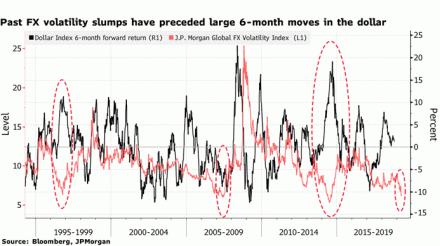
Pas FX volatility slumps have preceded large 6-month moves in the dollar – Source: Bloomberg, JP Morgan
We have to concur! – But in which direction?
Currencies EW-Forecasts for 2020
If you’ve tuned-in to our annual reports before, you’ll already know that the US$ dollar index is engaged in a 7.8-year cycle downtrend that began from the Jan.’17 high of 103.82. This is labelled as primary wave 3 within an Elliott Wave impulse downtrend that began from the July ’01 high of 121.02. You can probably imagine this means the dollar is set to decline rapidly over the next several years.
But if low volatility is a prelude to some big moves in the dollar, does that mean it will collapse immediately? Not so, basis the shorter-term EW pattern development which is also being corroborated by the weekly composite cycle of the US$ dollar index – see fig #4.
This composite cycle of the US$ dollar index is but one of several in this PART III Currencies & Interest Rate report. It depicts the US$ dollar bottoming around Nov.’19, then pushing higher until July ’20. Whilst these turning points are not exact, they do provide a useful overlay. Especially, in conjunction with shorter-term daily cycle analysis. What it does tell us is this – the dollar isn’t quite ready to resume its larger 7.8-year cycle downtrend.
Currencies and the Inflation-Pop
One of the key aspects to this year’s analysis revolves around the theme of the ‘Inflation-Pop’, where asset prices advance exponentially over the next two, maybe three years.
The Inflation-Pop advance is characterised by an Elliott Wave A-B-C zig zag pattern which began lifting prices higher for Stocks, Bonds, Emerging Markets and Commodities from the financial-crisis lows of 2008/09. Specifically, this A-B-C zig zag upswing is depicting the exact pattern of Emerging Market indices and many different Commodities, like benchmark Copper – see fig #5.
US Dollar Timing
But it’s also applicable to the ongoing direction of the US$ dollar. With Commodity prices set to resume wave C of the zig zag this year, in 2020, triggering the next stage of significant price advances, this will undoubtedly signal the TIMING for a declining dollar.
The latest Global Purchasing Managers Index (PMI) and GDP data from IHS Markit/JP Morgan corroborates the ‘Inflation-Pop’ outlook – see fig #6. We’ve annotated primary waves A and B onto the data where a sharp rise occurs for wave A from the financial-crisis lows, peaking in late-2010/early-2011, the same time that commodities and emerging market indices peaked.
Wave B’s corrective downswing has taken far longer than we first imagined. Commodities and EM’s have since ended their corresponding wave B lows in early-2016 in what was termed at the time as the Grand ‘Re-Synchronisation’ lows. But for the Global PMI, wave B is only now approaching downside completion. Just imagine what fundamental, economic conditions will arise as advances unfold as wave C!! Upside targets for wave C are towards the 70-75 point level, a massive advance over the next few years.
The Global Manufacturing & Services index, again courtesy of IHS Markit/JP Morgan shows exactly the same A-B-C zig zag pattern in upside progress, where wave B is ending now, wave C is set to explode higher – see fig #7.
For sure, 2020 is going to be a spectacular year.
Interest Rates
We already know that interest rates are artificially low. However, not only from a historical mean average but also from the fact that central banks are openly manipulating lower rates in an effort to maintain global economic growth following the financial-crisis collapse. This raises some big questions! Can central banks begin rebalancing rates higher as the economy grows? Or is it still too fragile? Could some exogenous event stymie efforts to support the financial system in the event of a recession? Or worse, another economic meltdown?
The Federal Reserve under Jerome Powell has hinted just recently about misgivings over the increasing national debt. The Treasury Department projected the budget deficit for the first four months of fiscal 2020 as $389.2 billion, a 25% per cent gain over the last year. Over the past 12 months, the gap has been nearly $1.1 trillion as the national debt has swelled past $23 trillion.
Total household debt rose by $193 billion during the last quarter of 2019, continuing a five-year upward trend. It now stands $1.5 trillion higher, in nominal terms, than the pre-recession peak of $12.7 trillion reached in 2008.
Powell added that the central bank wanted to update its policy-setting manual to address an economic environment in which falling inflation was potentially a more pressing problem than rising inflation. That’s ironic because it won’t be long before the natural forces of inflation begin to rise anyway.
Interest Rates and US10yr Breakeven Inflation TIPS rate
Earlier, we looked at global PMI data and could see it matched the ‘Inflation-Pop’ schematic, a rising A-B-C zig zag pattern where wave C is about to surge higher, lasting the next few years. Now look at this next graph – see fig #8. It depicts the US10yr Breakeven Inflation TIPS rate where the advance from the financial-crisis low of 0.077 is advancing into the same inflation-pop zig zag.
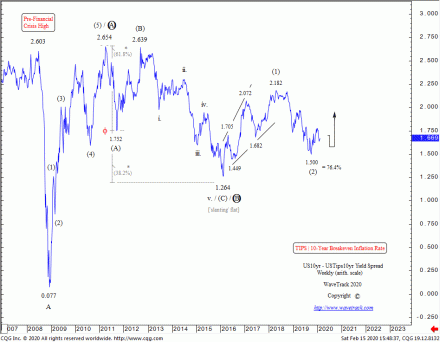
Interest Rates Elliott Wave Forecast by WaveTrack International – US10yr Breakeven Inflation TIPS rate
Primary wave A’s advance completed into the April ’11 peak of 2.654%, around the same time as corresponding peaks in commodities and emerging markets. Wave B then declined, finishing into the Grand ‘Re-Synchronisation’ lows of February ’16 at 1.264%. And since then, primary wave C has begun to trend higher beginning with 1st and 2nd waves within the ongoing (1)-(2)-(3)-(4)-(5) uptrend. Wave (5) has ultimate targets towards 4.247% which means much higher inflationary pressures are about to begin.
Should the TIPS chart be accurate as we believe it will, then the Federal Reserve will end-up being well behind the curve as they hesitate to stem the rising inflationary pressures. As a result, catching them unawares in a similar event to the 1970’s.
Interest Rates and Longer-term Outlook
The long-term triple AAA corporate bond yield cycle certainly depicts an artificial prolongation of low interest rates – see fig #9. Whilst rising interest rates will undoubtedly be damaging for the U.S. and global economy further down the road, in its early stage of this next advance, it will simply be interpreted by central banks as a natural shift towards normalisation. And under these conditions, asset prices can explode higher, only to burst the inflation-pop bubble sometime later.
These bullish asset/inflation-pop uptrends are not shared by the consensus analysis. So far this year, two investment banks, UBS and UniCredit have come out with forecasts of three, maybe four consecutive ¼ quarter-point interest rate cuts by the Federal Reserve. That’s a pretty downbeat forecast. But that’s not all – economists are again focusing on the fact that the US dollar yield curve has inverted where US3-month yield/US10yr yield is again trading negatively. Analysis suggests this is the prelude to a recession – see fig #10.
However, that doesn’t stack up against the Elliott Wave analysis – quite the contrary.
New Currencies & Interest Rates 2020 Video – PART III/III
We’ve amassed over 90 charts (a new record!!) from our EW-Forecast database in this year’s Currencies & Interest Rates 2020 video. Each one provides a telling story into the way Elliott Wave price trends are developing in this next INFLATION-POP’ phase of cycle development. Moreover, we’re taking a look at some very specific patterns that span the entire 15.6-year US$ dollar cycle, explaining its current location and why inflation will trigger huge US$ dollar declines but simultaneously appreciating major Emerging Market and Asian Currencies.
Furthermore, we’re updating some amazing Elliott Wave forecasts for U.S. interest rates, US10yr, US10yr, US05yr and even US02yr together with a schematic look at several spread relationships with European rates not forgetting upside targets for the US10yr Inflation Tips – it’s a must-see!
We invite you to take this next step in our financial journey with us – video subscription details are below – just follow the links and we’ll see you soon!
Most sincerely,
Peter Goodburn
Founder and Chief Elliott Wave Analyst
WaveTrack International
Currencies and Interest Rates Video Content
90 charts | 2 hours
The contents of this CURRENCY & INTEREST RATES VIDEO include Elliott Wave analysis for:
Currencies:
• US$ index
• Euro/US$
• Stlg/US$
• US$/Yen
• US$/CHF
• AUD/US$
• NZD/US$
• US$/CAD
• Euro/Stlg
• Euro/Yen
• Euro/CHF
• Euro/NOK
• Stlg/Yen
• Stlg/ZAR
• Stlg/AUD
• Asian ADXY
• US$/KRW
• US$/SGD
• US$/INR
• US$/TWD
• US$/THB
• US$/MYR
• US$/IDR
• US$/PHP
• US$/BRL
• US$/RUB
• US$/CNY
• US$/ZAR
• US$/MXN
• US$/ARS
• US$/TRY
• US$/PLZ
• Bitcoin
Interest Rates:
• U.S. AAA+ 30-Year Corporate Bond Yields
• US30yr Yield
• US10yr Yield
• US05yr Yield
• US02yr Yield
• US10yr TIPS Break-Even Inflation Rate
• US10yr Tips Yield
• Various Spreads
• DE10yr Yield
• ITY10yr Yield
• JPY10yr Yield
CONTACT US NOW VIA EMAIL – SELECT YOUR PACKAGE
Single Video – *$48.00 – PART III CURRENCY and INTEREST RATES Video Outlook 2020 (February 2020)
Triple Package offer – *$96.00 (saving 33%)! – PART I – PART II – PART III (January – March ’20)
*(additional VAT may be added depending on your country – currently US, Canada, Asia have no added VAT but most European countries do)
PART III will be available in a few weeks’ time – we’re working on it!
HOW CAN YOU RECEIVE THE VIDEO FORECAST?
To receive your VIDEO UPDATE please click here to contact us.
– Please state if you wish to purchase the SINGLE VIDEO – Currencies and Interest Rates Video Outlook 2020 for USD *48.00 and send us an email to services@wavetrack.com?
– Or opt for the TRIPLE PACKAGE for USD *96.00 in total?
– Next we will send you a PayPal payment request and provide you with the video link & PDF report once payment is confirmed. Please know the reply can take up to 6 hours due to time zone differences. But rest assured we will give our best to provide you with the information as soon as possible!
*(additional VAT may be added depending on your country of residence. Currently, the US, Canada, Asia have no added VAT but most European countries do)
We’re sure you’ll reap the benefits – don’t forget to contact us with any Elliott Wave questions – Peter is always keen to hear your views, queries, and comments.
Visit us @ www.wavetrack.com
Crude Oil – Elliott Wave Tutorial – When is a diagonal not a diagonal?
by WaveTrack International| February 7, 2020 | 3 Comments
Elliott Wave Tutorial – Example Crude Oil
Read more «Crude Oil – Elliott Wave Tutorial – When is a diagonal not a diagonal?»
